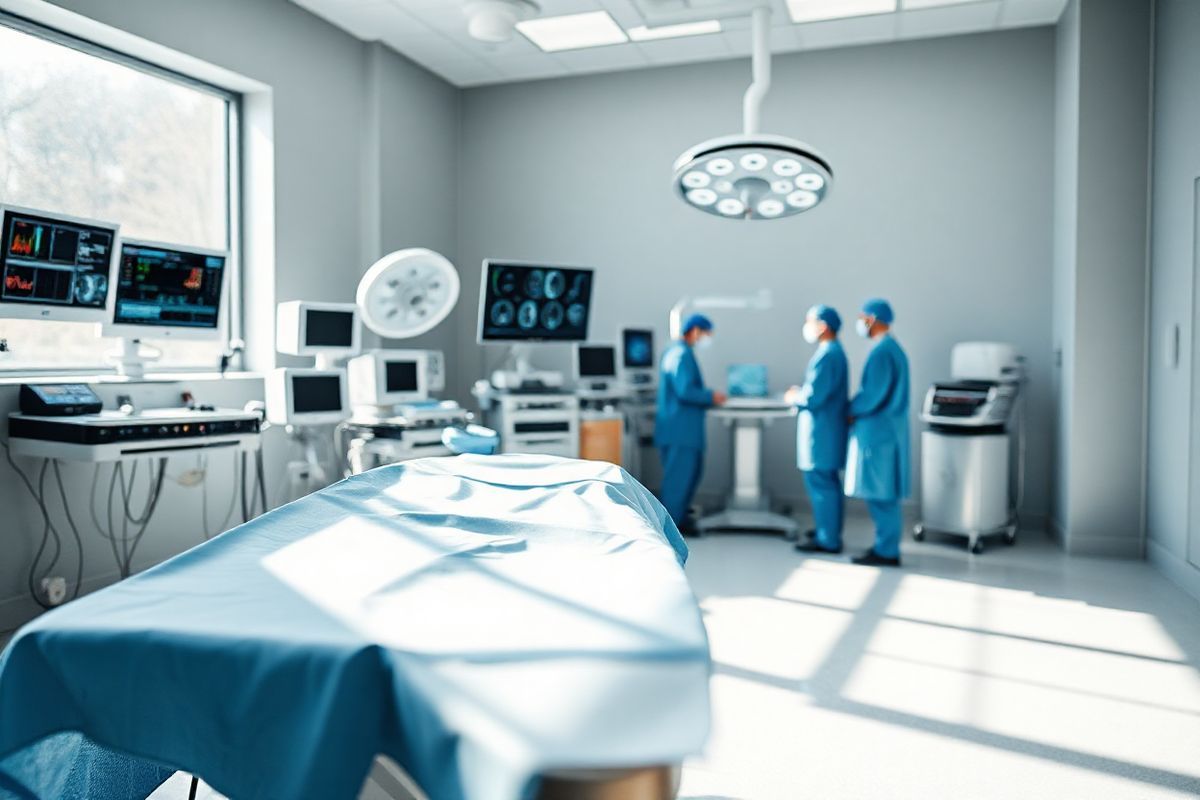Table of Contents
Understanding Parotidectomy: What You Need to Know About Salivary Gland Surgery

Parotidectomy is a surgical procedure aimed at removing all or part of the parotid glands, which are the largest salivary glands located in front of and below each ear. The primary reasons for undergoing a parotidectomy include the presence of tumors, infections, or blockages such as salivary stones. The procedure can be classified into two main types: superficial parotidectomy, which involves removing the superficial lobe of the gland, and total parotidectomy, which entails the removal of both lobes of the parotid gland. The facial nerve, responsible for controlling the muscles of facial expression, runs through the parotid gland, making its preservation during surgery critical to maintaining facial functionality (Cleveland Clinic, 2023).
Understanding the anatomy of the parotid glands is crucial for patients contemplating surgery. Each gland is divided into superficial and deep lobes, and the facial nerve traverses through these lobes, creating a complex relationship that surgeons must navigate during the operation. Preoperative assessments typically include imaging studies such as CT scans or MRIs to ascertain the size, location, and nature of the tumors, helping surgeons plan their approach accordingly (Cleveland Clinic, 2023).
The Purpose of Parotidectomy: Indications and Conditions Treated
Parotidectomy is indicated for a variety of conditions, primarily tumors within the parotid gland. Tumors can be benign or malignant, with benign tumors being more common. Benign tumors often require removal to prevent them from causing further complications, such as pressure on surrounding structures or transforming into malignant tumors over time (UChicago Medicine, 2023). Examples of benign tumors include pleomorphic adenomas and Warthin tumors. Conversely, malignant tumors, such as mucoepidermoid carcinoma and adenoid cystic carcinoma, necessitate surgical intervention not only to remove the tumor but also to mitigate the risk of metastasis (UChicago Medicine, 2023).
In addition to tumors, parotidectomy may be performed in cases of recurrent infections or blockages caused by salivary stones. Salivary gland stones can obstruct the flow of saliva, leading to painful swelling and infections. When conservative treatments fail to alleviate these issues, surgical intervention becomes necessary to restore normal gland function and relieve symptoms (National Institute of Dental and Craniofacial Research, 2023).
Exploring the Benefits of Parotidectomy: Enhancing Health and Quality of Life

The benefits of parotidectomy extend beyond the immediate removal of problematic tissues. For many patients, the procedure significantly enhances their quality of life. Successful removal of benign or malignant tumors can alleviate pain, discomfort, and cosmetic concerns associated with swelling or lumps in the parotid area (UChicago Medicine, 2023).
Moreover, parotidectomy can restore normal salivary function, which is vital for digestion and oral health. Saliva plays a critical role in maintaining oral hygiene by washing away food particles and neutralizing acids produced by bacteria in the mouth. Insufficient saliva can lead to dry mouth, increasing the risk of dental cavities, gum disease, and difficulty swallowing (NIDCR, 2023). By addressing the underlying conditions that impair salivary function, parotidectomy can help prevent these complications.
Another significant benefit is the potential for a better cosmetic outcome. Surgeons may employ advanced techniques, such as using a facelift incision, which allows for tumor removal with minimal scarring and better preservation of facial aesthetics (UChicago Medicine, 2023). This is particularly important for patients concerned about their appearance following surgery.
Navigating the Procedure: What to Expect Before, During, and After Parotidectomy
Preoperative Expectations
Before undergoing a parotidectomy, patients will participate in a comprehensive evaluation process. This includes a review of medical history, physical examinations, and imaging studies to assess the tumor’s characteristics. Patients may also be required to undergo a fine-needle aspiration biopsy to determine the nature of the tumor and to help guide treatment decisions (Cleveland Clinic, 2023).
Patients will receive specific instructions regarding medication management, dietary restrictions, and preparation for anesthesia. It is crucial that patients communicate any medications or supplements they are taking, as some can increase the risk of bleeding or interact with anesthetic agents (National Institute of Dental and Craniofacial Research, 2023).
During the Procedure
During the surgery, patients are placed under general anesthesia. The surgeon makes an incision, often in front of the ear, to access the parotid gland. Care is taken to identify and preserve the facial nerve to prevent postoperative complications such as facial weakness or paralysis. The length of the procedure can vary, typically lasting between three to four hours, depending on the complexity of the case (Cleveland Clinic, 2023).
The surgeon may employ various techniques based on the tumor’s location and type. If the tumor is benign and located superficial to the facial nerve, a superficial parotidectomy may be performed. In cases of malignant tumors or those involving deeper lobes, a total parotidectomy may be necessary (Cleveland Clinic, 2023).
Postoperative Care and Recovery
After the procedure, patients are monitored in a recovery room to ensure stable vital signs. Pain management is an essential aspect of recovery, with medications prescribed as needed. Patients can generally expect to stay in the hospital for one to two nights, depending on their recovery progress and any complications that arise (Cleveland Clinic, 2023).
Follow-up appointments are crucial for monitoring healing and checking for any signs of complications, such as infection or facial nerve dysfunction. Patients are typically advised to avoid strenuous activities and heavy lifting for several weeks post-surgery to allow adequate healing. Gradual resumption of normal activities can occur as tolerance increases (UChicago Medicine, 2023).
Potential Side Effects of Parotidectomy: Risks and Recovery Insights
While parotidectomy is generally safe, it is not without risks. The most significant potential complications include:
-
Facial Nerve Injury: Damage to the facial nerve can result in temporary or permanent facial weakness or paralysis. Surgeons employ meticulous techniques to identify and protect the facial nerve, but the risk remains, particularly in cases involving malignant tumors (Cleveland Clinic, 2023).
-
Infection: As with any surgical procedure, there is a risk of infection at the incision site or within the parotid gland itself. Patients are monitored closely for signs of infection, such as increased redness, swelling, or discharge (Cleveland Clinic, 2023).
-
Salivary Fistula: This occurs when saliva leaks from the surgical site, leading to a collection of fluid. It may require further management, including drainage or additional surgical intervention if it does not resolve spontaneously (Cleveland Clinic, 2023).
-
Dry Mouth (Xerostomia): Although the removal of a parotid gland does not typically result in a significant reduction in overall saliva production, some patients may experience dryness due to changes in salivary flow dynamics. This can be particularly pronounced if both parotid glands are removed (Cleveland Clinic, 2023; NIDCR, 2023).
-
Aesthetic Concerns: Depending on the surgical technique used and individual healing, there may be visible scarring or changes in the contour of the face. Surgeons often aim to minimize these outcomes through careful incision placement and closure techniques (UChicago Medicine, 2023).
Recovery Insights
Recovery from parotidectomy varies by individual but typically involves a gradual return to normal activities over the course of several weeks. Patients are encouraged to maintain hydration and follow good oral hygiene practices to reduce the risk of complications (NIDCR, 2023). Regular follow-up visits with the surgical team are essential for monitoring recovery and addressing any concerns that may arise during the healing process.
Frequently Asked Questions (FAQ)
What is parotidectomy?
Parotidectomy is a surgical procedure to remove all or part of the parotid glands, typically performed to treat tumors, infections, or blockages within the gland.
Why would someone need a parotidectomy?
Indications for parotidectomy include benign or malignant tumors, recurrent infections, salivary gland stones, and conditions causing significant discomfort or functional impairment.
What are the risks associated with parotidectomy?
Risks include facial nerve injury, infection, salivary fistula, dry mouth, and aesthetic concerns related to scarring.
How long does recovery take after parotidectomy?
Recovery time varies but generally involves a hospital stay of one to two nights, followed by several weeks of gradual return to normal activities.
Will I experience changes in my appearance after surgery?
While surgeons strive to minimize visible scarring, some changes in contour or scars may be noticeable depending on the surgical technique used.
References
-
Cleveland Clinic. (2023). Parotidectomy: Procedure Details, Recovery & Outlook. Retrieved from https://my.clevelandclinic.org/health/treatments/24057-parotidectomy-parotid-gland-tumor-surgery
-
UChicago Medicine. (2023). Parotidectomy Using a Facelift Incision. Retrieved from https://www.uchicagomedicine.org/conditions-services/ear-nose-throat/parotidectomy
-
National Institute of Dental and Craniofacial Research. (2023). Saliva & Salivary Gland Disorders. Retrieved from https://www.nidcr.nih.gov/health-info/saliva-salivary-gland-disorders











